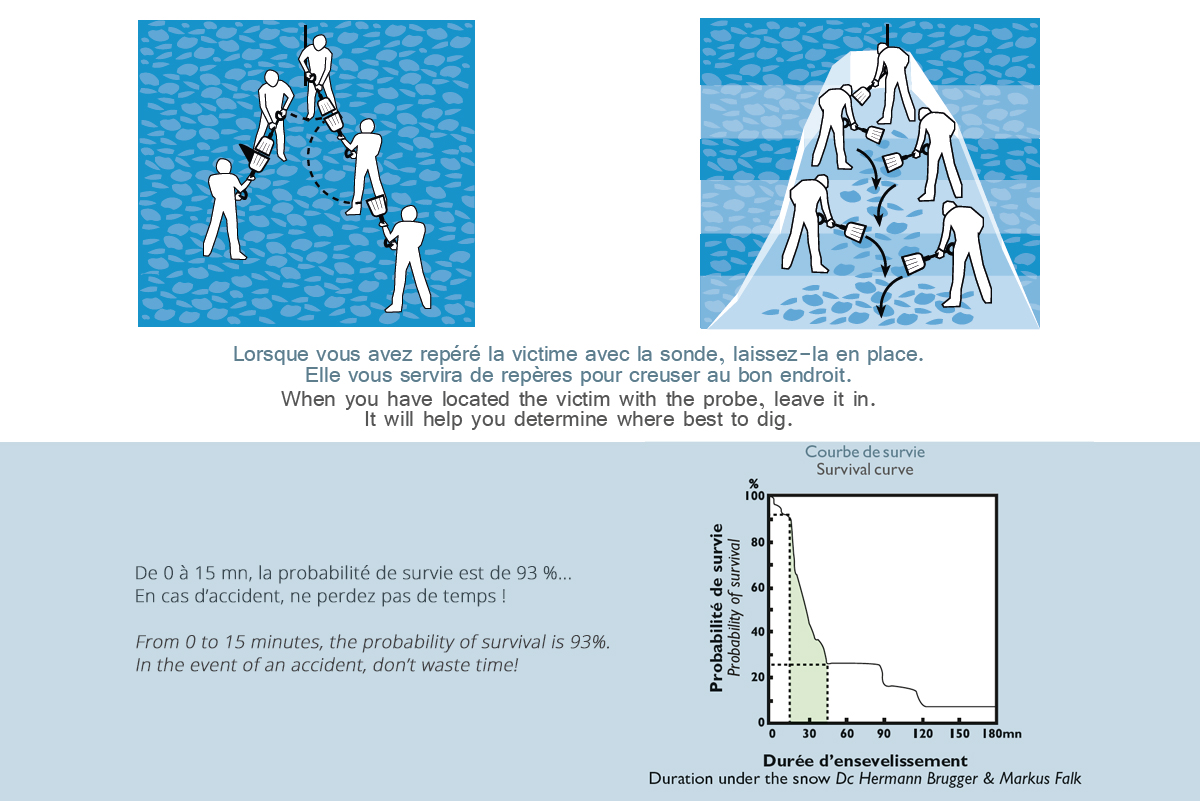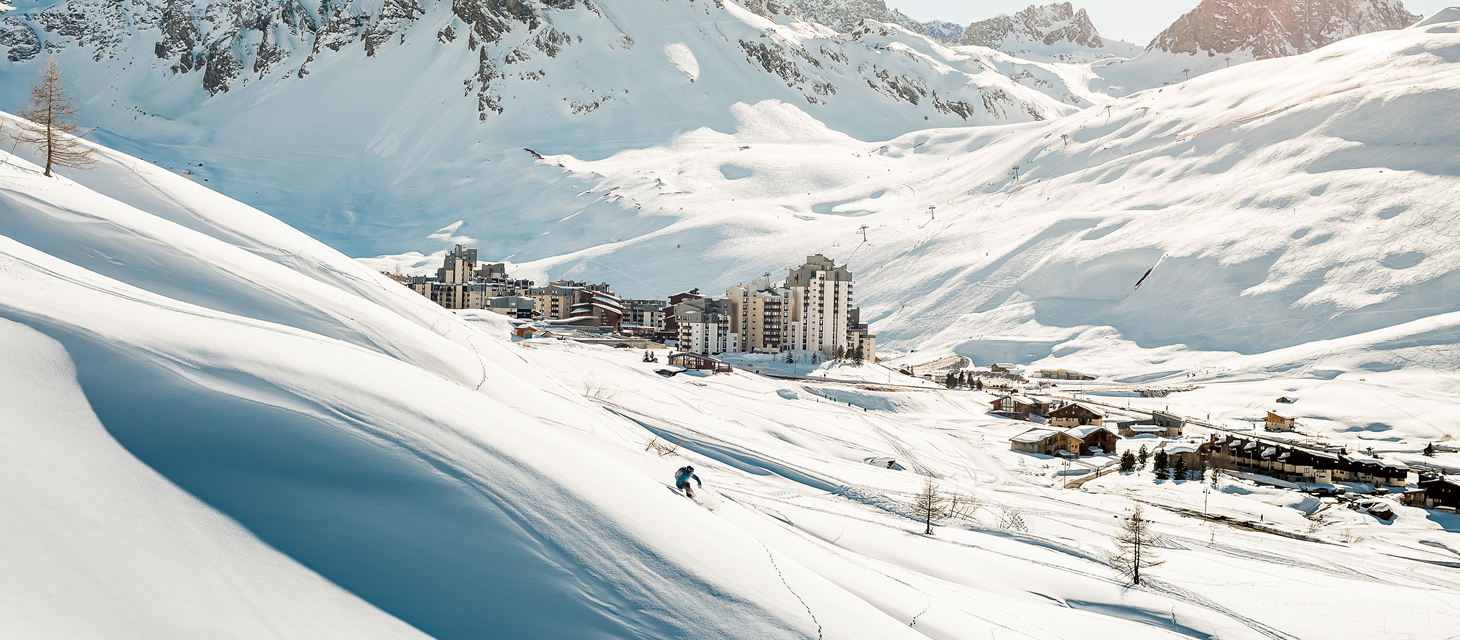
D.V.A.*, shovel and probe are a freerider's best friend. And because having a good equipment isn't enough, come and learn how to use it during introductory D.V.A.* session, organized every Tuesday by the Lac ESF on the D.V.A* Training Zone.
D.V.A..* is a transmitter/receiver. It allows rescuers to search for the exact location of an avalanche victim, even when buried under several metres of snow.
After the victim's localization via the D.V.A*, the probe allows rescuers to locate the victim with greater precision and certitude and, above all, to know how far down to dig.
Finally, the shovel allows rescuers to reach the buried victim and get him or her out in time.
D.V.A.*, shovel and probe: an essential trio of every off-piste outing. Neglecting a single link in this important chain limits the effectiveness of every search!
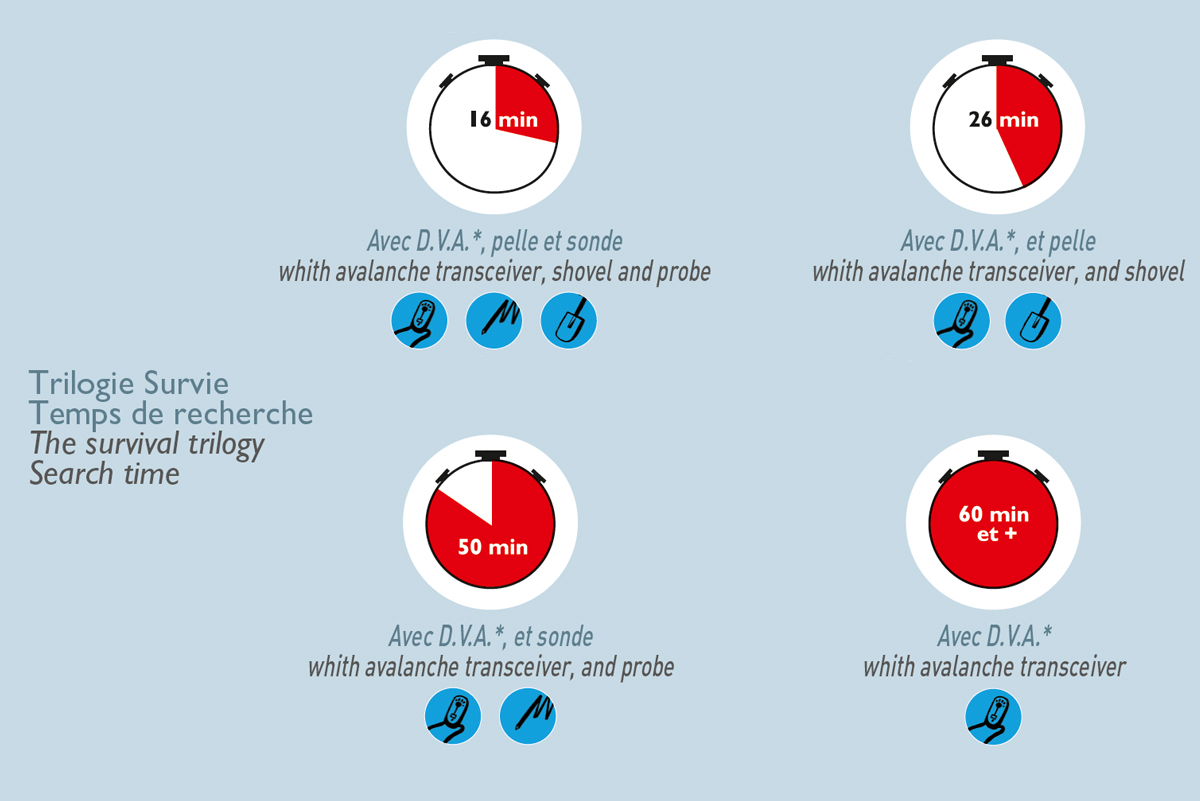
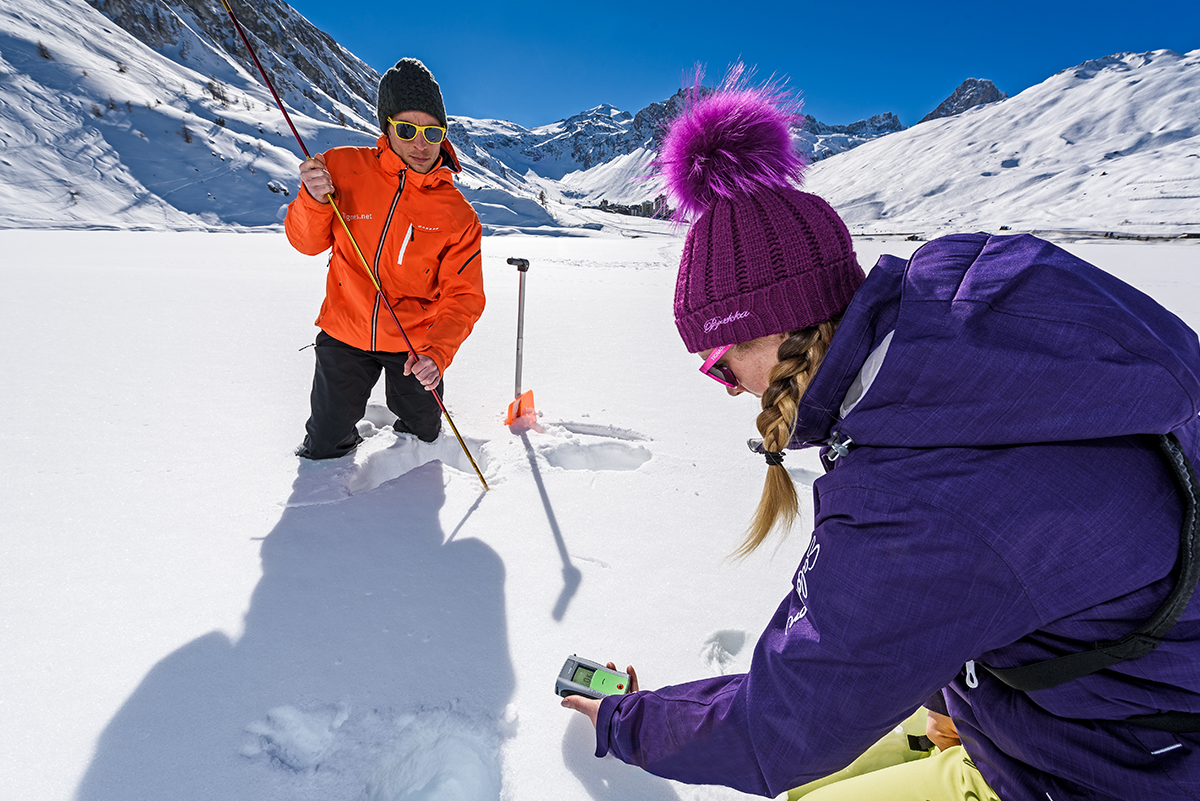
You are an off-piste fan? Before heading out to the powder snow, it's essential to prepare your off-piste route carefuly.
Having a D.V.A.* is good, but knowing how to use it is even better! Every freerider must learn, practice or perfect their own search technique using en avalanche transceiver.
Free introductory sessions are organized by ski schools. More information in the programme of the week. Join in!
And verifying that your D.V.A.* works before heading out is vital!
Installed on the totems next to the meather and snow condition bulletins, allows you to test your D.V.A.* in transmission mode.
Before heading off-piste, don't forget to set your D.V.A.* to transmission mode.
To search for someone buried by an avalanche, don't forget to set it to reception mode.
Tignes offers you 12 "Naturides": black slopes, marked out with beacons but not groomed.
Before heading out for a freeride session, it’s essential to get information on the weather forecast of the day and the snow-cover conditions.

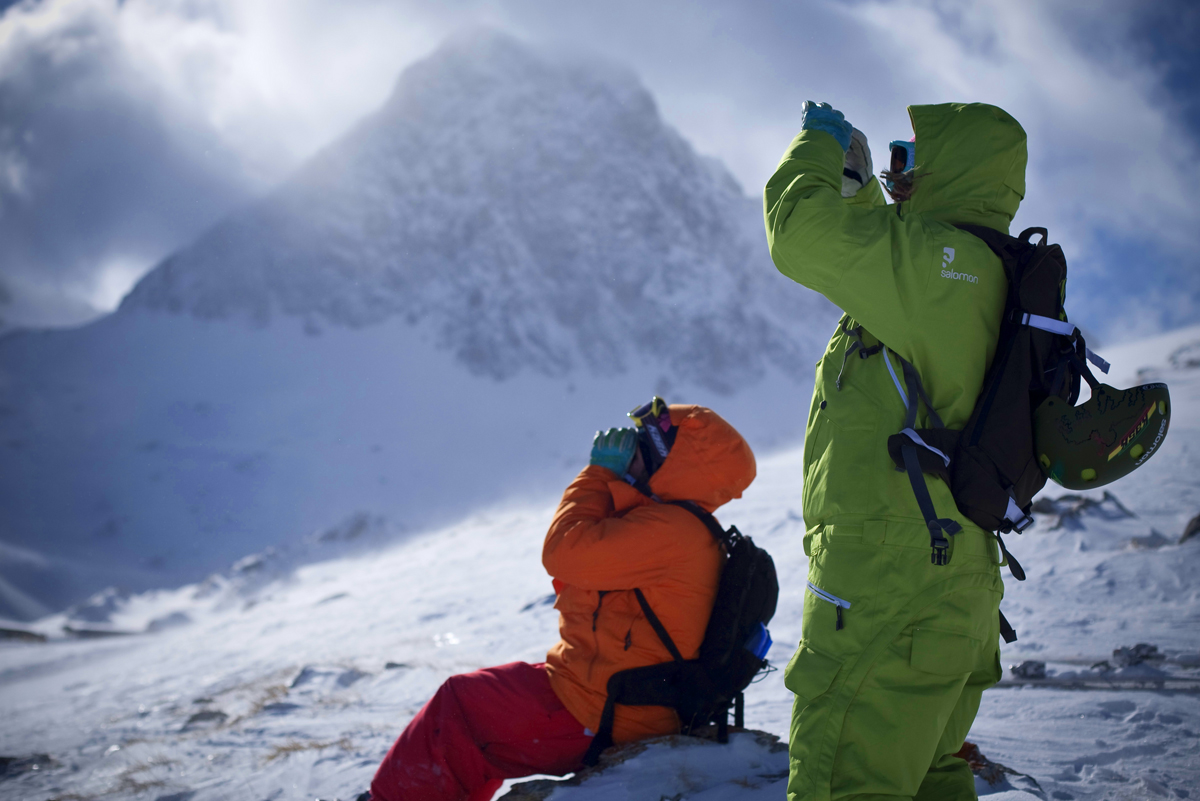
Conditions in the mountains can change quickly. Return when the conditions are once again optimal for your outing. Poor visibility, fog, night and snowfall disrupt and slow down assistance efforts in the event of an accident.
If the conditions are anything but optimal, it is highly recommended to stay on the marked pistes!
Tignes native and four-time freeriding world champion Guerlain Chicherit has this word of advice: “Never head out alone.”
Before any backcountry outing :
Excavating without a plan delays the rescue effort. The “V” digging technique allows you to save time and to lower the risks of stamping over the victim.
Here are its key points:
